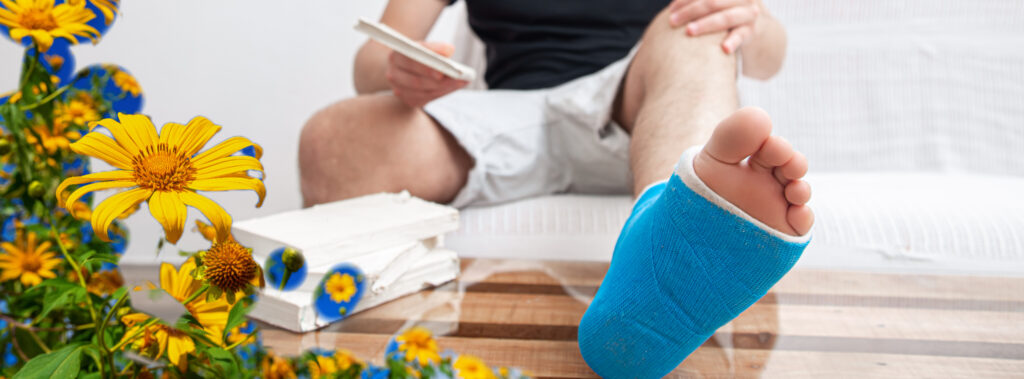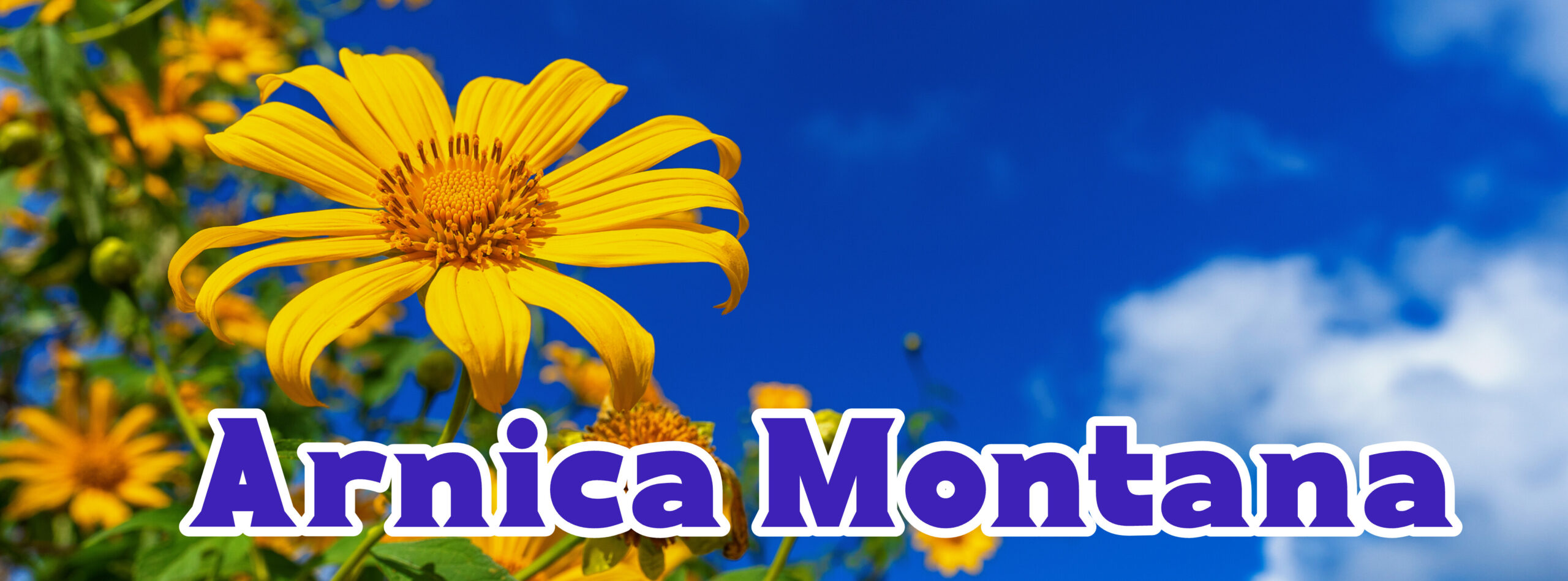Discovering the Lesser-Known Effects and Symptoms of *Arnica Montana* in Homeopathy**
Introduction
*Arnica montana*, commonly known as Leopard’s Bane or Mountain Daisy, is a popular homeopathic remedy mainly used for injuries, bruises, and muscle pain. However, new research has revealed some interesting and less well-known uses of *Arnica* that go beyond its usual applications. This article will explore these lesser-known effects and symptoms of *Arnica montana*, showcasing its wider therapeutic potential.
Common Uses of *Arnica Montana
Before we dive into its more unusual aspects, let’s first look at its typical uses:
Physical Injuries: It effectively treats bruises, sprains, strains, and injuries that come with soreness and discomfort.
Recovery After Surgery: It helps reduce swelling, relieve pain, and speed up healing.
Muscle Pain: It addresses issues related to overexertion, stiffness, and fatigue.
Emotional Shock: It can be beneficial after accidents or distressing situations.
Lesser-Known Effects
1. Neurological and Cognitive Benefits
Recent studies suggest that *Arnica* might have subtle effects on the nervous system:
Post-Concussion Symptoms:** It may help with dizziness, confusion, and headaches that can occur after a head injury.
Mental Clarity: Some practitioners have observed improvements in mental fogginess after trauma.
Better Sleep Quality: Those struggling with insomnia due to physical exhaustion often find relief with *Arnica*.
2. Emotional and Psychological Aspects
Besides its physical benefits, *Arnica* can also help with emotional challenges:
Pain Denial: Some patients may insist they are “fine” even when they have clear injuries, which is an important mental symptom.
–Aversion to Touch:
Individuals may avoid being touched or approached due to previous trauma.
Post-Traumatic Stress (PTS): It can help ease ongoing anxiety following accidents or traumatic events.
3. Cardiovascular and Circulatory Benefits
New insights suggest that *Arnica* may have a positive impact on blood circulation and overall heart health.
Micro-Circulation Enhancement
*Arnica* can help repair small blood vessels and minor bleeding.
Varicose Veins and Hemorrhoids: It helps with blood flow issues that may arise from injuries or overdoing things.
Stroke and Hematoma Prevention:** Some homeopathic practitioners recommend it as a precaution for people at higher risk.
Skin and Dermatological Applications
*Arnica* is well-known for helping with bruises, but it also has important benefits for skin issues:
Burns and Scalds: When used with *Cantharis* or *Urtica urens*, it can promote healing.
Eczema and Dermatitis: It is effective for skin conditions caused by injury or stress.
Chronic Wounds: It can assist in healing slow-healing ulcers when used correctly.
Gynecological Uses
New uses of *Arnica* in women’s health include:
Postpartum Healing: It can help relieve pain, bruising, and bleeding after childbirth.
Menstrual Discomfort from Injury: It offers relief when menstrual pain follows an injury.
Fibroids and Hematomas: It may assist in reducing blood stagnation.
Autoimmune and Inflammatory Issues
Early research suggests that *Arnica* might help lessen inflammation:
Rheumatoid Arthritis: It can be helpful when joint pain feels bruised or is aggravated by touch.
Fibromyalgia: It can relieve deep muscle soreness and stiffness.
New Key Symptoms and Modalities
Recent studies have identified some less common symptoms:
“Bed feels too hard” A peculiar sensation where a person feels the bed is uncomfortable, even if it is soft.
Sudden fatigue after exertion– An unexpected tiredness that occurs without a clear cause.
Frequent nosebleeds after minor injuries.
Need for solitude: after experiencing trauma.

Arnica montana Overview
Arnica montana is a well-known remedy for trauma.
It is effective for various types of trauma, whether mental or physical, and for their effects, whether recent or long-standing.
This remedy has a significant impact on the blood, leading to conditions that may be putrid or septic.
It causes relaxation of blood vessels, which can result in bruising and a tendency to bleed, such as nosebleeds.
Arnica montana also affects the nerves, leading to neuralgia.
Muscles may feel extremely sore, painful, or bruised throughout the body.
Areas can become tender after pain or bleeding.
It helps prevent pus formation and can absorb it if it occurs.
Progressive weight loss and a feeling of great fatigue or tiredness may also be present.
Discharges from the body can be foul-smelling, affecting breath, taste, gas, and stool.
Patients may experience crushing pain and find their bed feels hard or lumpy.
Some may have involuntary bowel movements or abscesses that do not mature.
Pain can be sudden and move between joints, resembling paralysis.
It works best in individuals who are robust, dark-haired, and have a nervous but sanguine temperament.
It is less effective in those who are weak, have poor blood quality, or soft flesh.
It can be useful for compound fractures, muscle twitching, and conditions like osteomyelitis.
Emotional distress from fright, financial loss, anger, or excessive use of any organ can also be addressed.
Symptoms may worsen after exertion, during old age, or due to factors like alcohol, damp cold, coal gas, or lying on the left side.
Improvement
– Lying down, especially with the head low or stretched out, often helps alleviate symptoms.
Mental Symptoms
There may be a strong fear of being touched, falling ill, or facing sudden death, particularly at night.
Feelings of sadness or remorse can accompany mental fatigue and apathy, even if the person doesn’t express physical complaints.
When engaged in conversation, responses may be slow and laborious.
There can be forgetfulness, especially while reading, and emotional outbursts after anger.
Some individuals might feel hopeless or indifferent, experiencing severe anxiety or even delirium tremens.
A sudden fear can wake someone from sleep, especially after an accident.
There may be a strong urge to scratch various parts of the body.
In severe cases, symptoms may include coma or muttering delirium.
Head Symptoms
The brain may feel fatigued or burning.
Dizziness can occur, especially in older individuals, accompanied by nausea and vomiting.
Headaches can feel like being struck by a nail.
The head may feel hot while the rest of the body is cold, or there may be cold spots on the forehead.
Meningitis can result from head injuries.
Eye Symptoms
The eyes might appear bloodshot, and there could be retinal bleeding or sensitivity to light.
They may feel tired and heavy after visual activities.
Ear Symptoms
Hearing difficulties and noises in the ears can occur, along with possible bleeding or pain.
Nose Symptoms
Frequent nosebleeds may happen, especially after coughing or washing the face.
Sneezing can be triggered by lifting heavy objects.
Facial Symptoms
The face may appear ruddy or pale, with swollen and cracked lips.
There can be tremors in the lower lip while eating and painful acne on the face.
Mouth Symptoms
Bad breath and dryness can be present, along with a metallic taste.
The throat may feel irritated, and swallowing can be challenging.
Stomach Symptoms**
Symptoms may include bad-tasting burps, loss of appetite during the day, and nausea.
Vomiting dark, coagulated blood can indicate severe distress in the stomach.
Abdominal Symptoms**
Cramps can occur in the abdomen, leading to foul stools.
There may be sharp pain and involuntary diarrhea during sleep.
Urinary Symptoms**
Pain in the kidneys and difficulty urinating can occur, with a constant need to go.
Male Symptoms**
Issues such as impotence or swelling can arise from excessive activity.
Female Symptoms**
After-pains may worsen during breastfeeding, and soreness can occur after labor.
There can be issues like hemorrhage after intercourse and soreness in the nipples.
Respiratory Symptoms**
Hoarseness can worsen with exertion or cold weather, and coughing may occur during sleep.
Heart Symptoms**
Heartbeats may feel strong and unsettling, and sudden chest pain can occur.
There may be a feeling of constant anxiety about health.
Neck and Back Symptoms**
Weakness in the neck muscles can cause the head to fall back, and the back may feel sore.
Extremity Symptoms**
Limbs may ache as if they have been beaten, and there can be cramps in the fingers.
Skin Symptoms**
The skin may appear mottled, and even minor injuries can result in bruising.
There may be symmetrical skin eruptions or sores.
Sleep Symptoms
Drowsiness can lead to sudden sleep, and nightmares may cause anxiety upon waking.
Fever Symptoms
Symptoms may include chills with redness on one side of the face or other parts being cold.
Complementary Remedies**
Aconite, Calcarea, Natrum sulfuricum, Psorinum, Rhus toxicodendron, and Sulphuric acid may complement the use of Arnica montana.
Related Remedies
Bels, Echi, Hypericum, and Rhus toxicodendron are related to Arnica montana.
Conclusion
Arnica montana* is an essential component of homeopathic treatment for trauma. Its newly discovered effects reveal a broader range of benefits, including support for neurological health, emotional recovery, cardiovascular health, and potential impacts on autoimmune responses. *Arnica* continues to show its impressive versatility.
